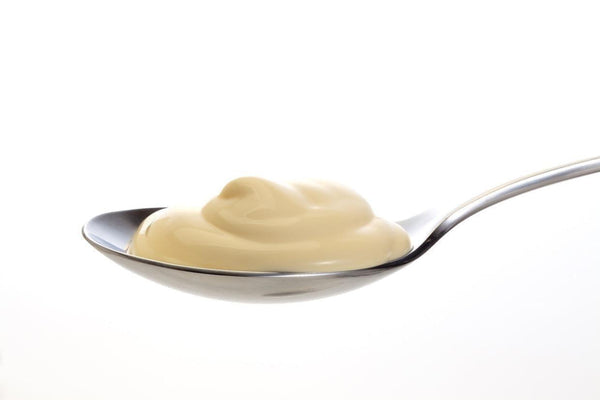
Jump to:
Creamy and delicious in taste, Japanese mayo is a staple item in any Japanese kitchen or restaurant, and is an essential ingredient used in dishes inside and outside the home. Check out our guide to discover everything you need to know about Japanese mayo including:
- The difference between Japanese mayo and American mayo
- How to use Japanese mayo in cooking
- The best dishes to use Japanese mayo in
- Nutritional information about Japanese mayo
- How to store Japanese mayo
What's the Difference Between Japanese Mayo and Regular Mayonnaise?
Unlike mayonnaise produced in Western countries like the United States, Japanese mayo is usually made using only the egg yolk instead of the entire egg and is slightly more yellow in color. A different kind of vinegar is also used to make the mayonnaise, with Japanese mayo using rice vinegar instead of distilled vinegar. These differences in ingredients help to create a creamier and sweeter tasting Japanese mayo compared to its Western counterparts.

How to Use Japanese Mayonnaise in Cooking
Japanese mayo is extremely versatile and can be used in the same way as regular mayonnaise. Whether that means using it as a sandwich spread, a dipping sauce or in salads and homemade dressings, once you try Japanese mayo it’s difficult to go back to any other kind! Other Western-style dishes you can try using Japanese mayo with are eggs Benedict, coleslaw, on burgers, inside grilled cheese sandwiches, and devilled eggs.
Which Japanese Dishes Use Mayo?
In Japan you’ll find mayo used in many everyday dishes, here are some of the most common uses of Japanese mayo in Japanese cuisine:
Egg mayo sandwiches
Known as tamago sando in Japanese, these simple sandwiches are a favorite convenience store item for Japanese residents and tourists and are a great snack to eat on the go when you’re in a hurry. These sandwiches are made on soft white bread and filled with mashed up hard boiled eggs covered in Japanese mayo. In recent years, this simple snack has become so popular with international visitors to Japan it was even featured by celebrity chef Anthony Bourdain who described it as “Unnatural, Inexplicable Deliciousness!”

Okonomiyaki
Okonomiyaki is a popular Japanese dish which is usually described as a savory pancake. Okonomiyaki batter is made from flour, egg, and cabbage, and from there you can add whatever ingredients you like. Pork, vegetables, cheese, and seafood are all popular fillings, and Hiroshima-style okonomiyaki also includes a layer of yakisoba noodles. To finish the dish, okonomiyaki is decorated with Japanese mayonnaise, as well as a Worcestershire-type sauce, bonito flakes, and aonori seaweed.

Yakisoba
Japanese mayo is also used as a garnish for yakisoba, a stir-fried noodle dish that eveolved from Chinese chow mein containing meat and vegetables such as cabbage. Yakisoba is a popular street food found at Japanese festivals and is also sold as a ready-made dish in supermarkets and convenience stores. It is normally cooked in yakisoba sauce, a sauce made from Worcestershire sauce, oyster sauce, ketchup, soy sauce and sugar.

Potato Salad
Japanese potato salad is a very popular side dish often served as part of a meal set in restaurants which typically features a main dish and small side dishes like rice, miso soup, and salad. Japanese potato salad is a colorful dish that includes ingredients like carrots, hard-boiled eggs, cucumber, and ham, but it’s the Japanese mayo that makes it distinctly different to its Western counterparts.

Japanese mayo can also be used as a dipping sauce for sushi or inside sushi rolls, in tamagoyaki (Japanese omelets), with chicken nanban, and as a dipping sauce for karaage, Japanese fried chicken.
Is Japanese mayo healthier?
Like most mayonnaise sauces and condiments, Japanese mayonnaise is not really considered a health food thanks to the presence of MSG, and one tablespoon of Japanese mayo contains around 100 calories which is quite high. However, when comparing Japanese mayo with regular mayo, the salt, cholesterol, and fat content is slightly lower in the Japanese version.
How do I store Japanese mayo?
Before opening, keep the mayo out of direct sunlight and store in a cool place. After opening, keep Japanese mayo in the refrigerator but avoid temperatures below zero degrees Celsius. If the mayo is stored in conditions that are too cold, it will separate and won’t be suitable for consumption. If the mayo is stored in direct sunlight, it will become discolored. Consume the mayo within one month after opening.


0 comments